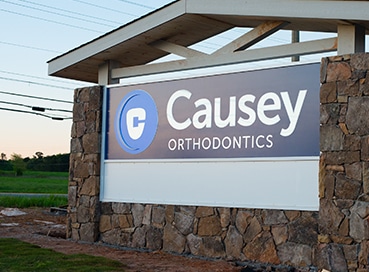All About Orthodontics
Table of Contents7 Easy Facts About Orthodontics Explained4 Easy Facts About Orthodontics ExplainedOrthodontics Things To Know Before You BuyThe Buzz on OrthodonticsA Biased View of OrthodonticsThe 7-Second Trick For OrthodonticsThe 9-Minute Rule for Orthodontics
You may feel some pain for a while when your braces are initially put on and when they are adjusted (Orthodontics). It will take a little time to obtain used to your dental braces and they can trouble your lips and cheeks. If this occurs, an alleviation wax can be related to your bracesIt is necessary to comb your dental braces in addition to the front, back and eating surfaces of the teeth. Your dental expert or orthodontist will provide you tips on just how to brush and on exactly how to floss making use of floss threaders. After flossing, roll it up in a tiny round and placed it in the trash.
The Greatest Guide To Orthodontics
Parents need to manage their kids to make certain they do a good job cleansing their teeth and dental braces and comply with the suggestions of their dental practitioner or orthodontist. If you have dental braces, do not bite on tough points such as ice and nuts. Do not chew the ends of pens or pencils.

It guides the direction of tooth activity and jaw growth in a person who is still expanding. There are various kinds of headgear and they may be put on during any type of part of the orthodontic therapy. Your orthodontist or dental practitioner will reveal you exactly how to put on the headwear and inform you for how long to use it daily.
The 8-Second Trick For Orthodontics
They might need to be used all the time or component of the moment. Tooth elimination may be needed if your teeth are crowded or if a tooth is severely out of position. Jaw surgery (or orthognathic surgical procedure) may be needed when there are significant differences in the dimension or setting of the upper and reduced jaws.
An orthodontist is a dental expert trained to identify, protect against, and treat teeth and jaw irregularities. They remedy existing problems and are trained to identify troubles that might develop in the future. Orthodontists collaborate with people of every ages, from youngsters to grownups. Individuals commonly associate an ideal smile with great wellness.
All orthodontists are dental professionals, but not all dental practitioners are orthodontists. Orthodontic residency programs offer extensive, focused guideline for dental specialists. They focus on two locations: Just how to appropriately and securely move teeth Just how to effectively direct advancement in the teeth, jaw, and faceOnce an orthodontist has completed training, they have the alternative to come to be board licensed.
The Only Guide to Orthodontics
Imbalance, or malocclusion, is the most common factor people see an orthodontist. It is hereditary and is the result of dimension distinctions in between the top and reduced jaw or in between the jaw and teeth. Malocclusion brings about tooth overcrowding, a misshapen jaw, or uneven bite patterns. Orthodontics. Malocclusion is generally treated with: Your orthodontist connects steel, ceramic, or plastic hop over to here square bonds to your teeth.
Some individuals require a headwear to help move teeth right into line with stress from outside the mouth. A retainer is a custom tool that keeps your teeth in place.
They can create extra space in the mouth without having to pull teeth. If you have a severe underbite or overbite, you may require orthognathic surgery (likewise called orthodontic surgical treatment) to lengthen or shorten your jaw.
Some Known Facts About Orthodontics.
During your initial orthodontic appointment, you'll likely have: A official site dental examPhotos taken of your face and smileDental X-raysPanoramic (360 level) X-rays of your face and headImpressions to produce mold and mildews of your teethThese examinations will aid your orthodontist know just how to wage your therapy. An orthodontist is a dental professional who's had training to treat your teeth and jaw.
An orthodontist is concentrated on your bite, so something like a damaged tooth would certainly be dealt with by a dental expert. Orthodontists are concentrated on your bite, or the way your teeth fit with each other, and the straightness of your teeth.
What Does Orthodontics Mean?
Orthodontic treatment is known for its capacity to change smiles, yet its benefits prolong beyond mere aesthetics. Some of these advantages are: One of the significant orthodontic appliances is that it initiates a transformative procedure beyond tooth alignment.
Fascination About Orthodontics
Precise placement reduces the propensity for teeth to change or relapse post-procedure. This placement conservation makes sure that the financial investment in orthodontic treatment yields sustaining benefits for several years. Orthodontic therapy has developed considerably, offering a range of therapy techniques tailored to specific requirements and preferences. From traditional braces to very discreet clear aligners like Invisalign, clients can access varied options that align with their way of living and aesthetic choices.
These adjustments are important for keeping development and ensuring the treatment remains on track according to the established plan. The orthodontist develops a tailored procedure strategy based on the diagnostic documents and the person's why not find out more distinct requirements and choices. This plan describes the advised action to address the determined orthodontic problems and attain the preferred end result.